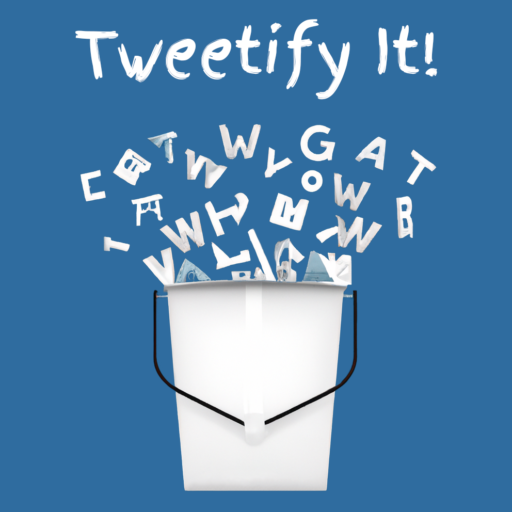Table of Contents
The Role of Data in Social Media
Data Analytics is a key factor for successful social media posts. It can help you to understand your target audience and measure the effectiveness of their posts.
Data can inform you about many fundamentals:
1) which type of content resonates best with the target audience and when it should be posted.
2) the ideal time to post a specific type of content to reach the maximum number of people.
3) identify which platforms perform better and adjust your strategy accordingly.
4) track engagement levels, such as website clicks, reposts and likes, to determine the success of your posts.
All of these can help massively make informed decisions about the content you post, the platforms and the modalities.
Understanding Social Media Marketing Metrics
Social media marketing metrics are integral to any successful social media campaign. By understanding which metrics to track and analyzing the data associated with them, you can gain valuable insight into your audience’s behaviour and performance.
To understand social media marketing metrics, it’s important to first and foremost define what they are: the quantitative measures of performance associated with a particular campaign or post. These metrics allow you to
1) measure your campaigns’ success and
2) identify any improvement areas.
The most common social media marketing metrics include reach, impressions, engagement, clicks, conversions, and shares. Reach is the total number of people who have seen the post, while impressions measure the number of times it was seen. Engagement is the number of interactions with the post, such as likes, comments, and shares. Clicks measure how many people clicked on the post, while conversions measure how many people took the desired action. Finally, shares measure how many people shared the post with others.
You should always be mindful of your goals and objectives when tracking these metrics, which metrics are most important for the campaigns, and focus on optimizing your posts to achieve the desired outcomes.
Another critical aspect is understanding the nuances of how different platforms measure the data. Some might be present only in one but not in another, or some might be present in all of them but called in different ways or measured with slightly different rules (e.g. after how many seconds a video is considered as ‘viewed’ or ‘skipped’)
Understanding Social Media Analytics
Once you understand and collect your metrics, it’s time to analyse the data.
Analytics helps you target your posts better and ensure they reach the right people. You can identify your core demographic and target your posts to the most relevant people.
And you do this by analysing the data from your posts, such as how people engage with them, when they’re engaging with them, and in the end, what type of content tends to generate the most engagement.
All of this also means that analytics can be used to track the overall performance of your profile or brand! Once you start collecting data over time, analysis can identify key trends, for example, in your audience’s behaviour, and help you adjust your strategy accordingly.
So if, for example, you’re slowly getting less traction overall on one of your social platforms, it might not be visible, if not over a longer period. And without metrics and analytics might be very difficult to understand the root cause and devise a strategy to fix the problem. A broader view of trends helps spot problems and solutions that are unavailable otherwise.
Strategies to Increase Engagement
Data analysis on social media is the tool that helps define the best strategies to increase reach and engagement.
Personalising content to the preferences of your target audience is the first and arguably most important magic sauce to increase engagement. And to achieve that, you need to look at the data associated with your audience and use it to tailor your content to their interests.
User-generated content is another powerful tool, increasing your social media presence while potentially saving you time. Encourage your followers to share their content featuring your products or services and use it to create compelling stories to engage with your target audience.
If these tasks seem a bit overwhelming, it’s normal, as they need time and dedication. One of the main problems with social media is that we commonly underestimate the time needed to manage and grow our audience. Typically dividing the problem into smaller parts and doing some simple testing are good ways to simplify things.
Audience segmentation can help you divide your target audience into smaller, more specific groups. This will allow you to deliver content tailored to each segment, aiming for maximum relevance and engagement. At the same time will help you divide your work into smaller, more manageable tasks.
A/B testing can help you compare different versions of your content to identify which performs better. This will help you determine which approach works best and give you the insights you need to improve your content further. The advantage is that A/B testing, in a way, saves you time as it does the analytics side for you. It’s much simpler to see more basic data between different types of pre-defined posts instead of trying to find meaning in a big amount of data not organised in smaller groups.
There are also more general considerations you must consider when defining strategies to increase engagement.
Tailoring content to different platforms is usually critical to maximising visibility. Each platform has its audience and preferences, and in some cases, rules (like the characters count on Twitter or lack of clickable URL support in messages on Instagram). So you need to make sure your content is tailored to suit.
Moving to an even broader view, if you’re targeting a more general (and bigger) audience, an invaluable ally is leveraging social media trends. Depending on what you talk about, look out for relevant hashtags, topics and conversations and use them to create timely and relevant content. Using hashtags is also an essential tool to join existing trending topics and threads and arrive to a wider audience (check my other blog post https://blog.tweetify.it/how-to-use-hashtags/).
Tools For Measuring Social Media Performance
When it comes to measuring social media performance, there are a variety of native tools and third-party options. Native tools are those provided by the social media platform itself, while external companies create third-party options. Each platform has its own native performance measurement tools, and a range of third-party free and paid professional tools.
When it comes to the native tools for each platform, Facebook offers Page Insights, Twitter has Analytics, YouTube has as well Analytics, on Instagram are called Insights, and LinkedIn has Company Analytics. These tools provide data on user engagement and reach, user demographics and other key performance metrics. Most of these tools are free to use, and is the first place you should start from. Be careful as these are sometimes available only for ‘business’ or ‘company’ accounts.
For third-party tools, Social Mention is a great option for measuring user engagement and reach, while Hootsuite is useful for managing multiple accounts and tracking conversations. Other popular alternatives are Sprout Social and Rival IQ for social media analytics. They provide comprehensive data and analytics on user engagement, reach, and more.
In recent years, particularly in the last one, we saw a wave of AI tools offering management and analysis of social media data. You can find more daily releases (for example, check Product Hunt!).
I believe you can quickly start with the native tools in each platform, it will be a great learning curve, and then you can jump on external tools. At that point, you’ll know what features you need the most and what your workflow is, and you’ll be in a better position to make an informed decision for any third-party tools (usually more expensive).
The Future Of Social Media And The Role Of Data
Social media is an ever-evolving field, and the future of social media largely depends on the data-driven decisions that companies make.
Data mining, predictive analytics, and artificial intelligence are all powerful tools that are and will be used more and more to drive the development of social media strategies.
Extracting structured data from raw sources, analysing the data to draw insights and make predictions about future customer behaviour, and filtering through large amounts of data to find patterns and trends which can be used to optimise posts and create better customer experiences.
Probably your social profiles already contain an incredibly useful amount of data that can help you expand and engage more with your audience, and I hope I helped a bit starting the journey 🙂
And don’t forget that using Tweetify It can help you greatly transform articles from your blog, or any long-form content, into compelling and personalised short posts. As you’ll see confirmed in your data analysis, short posts have a better chance of engagement, so you should always strive for shorter instead of longer posts.
Tweetify It uses AI to understand and summarize your content and create Twitter (and optionally Facebook, LinkedIn and Instagram) posts for you. You can specify the tone, what topics to keep or ignore, mentions, length, and even language.
The best part is that you can choose the hashtags you want to use or let Tweetify It AI decide based on its content analysis and context.
Tweetify It is a pay-as-you-go service with no subscription required. You can top up your credits whenever you need them, and there’s a free trial for new users, with 50 free lifetime credits for your first posts.
With Tweetify It, you can be sure that your content is always perfectly summarized and that your hashtags are carefully chosen.
Try Tweetify It today and take your social media game to the next level! And remember: give me some feedback and tell me what you think about it, and you’ll get more free credits!


